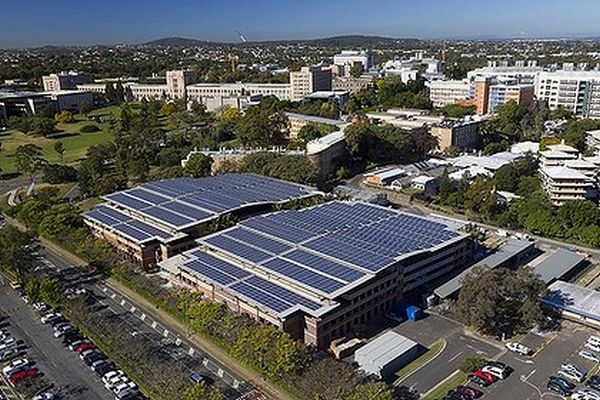
A massive solar system has been installed in the premises of University of Queensland in Brisbane, Australia. This energy generation system will take care of no less than 6 percent of the electricity needs of St. Lucia campus, which incidentally is a huge one. The entire system will generate around 1.22MW of power from the sun. This magnitude of power generation is made possible by installation of 5004 solar panels on the rooftop of four of UQ’s biggest buildings.
The project is basically an example of public-private partnership, a powerful tool for strengthening community in general on the issues of common interest. Under this partnership, the community will be given access to the project with the help of a website, which will show live and stored data about the solar power generated from these solar panels at the university campus. The main strength of this project is its strong industry partnership with many leading companies that are in alternate power production and building upon their expertise and experiences. The project has been launched successfully by a number of big players in the field.
A Brisbane based firm, Ingenero, deserves to be mentioned as it is the organization which installed the solar panels and worked on designing and engineering aspect. Besides, Trina Solar supplied the panels and will be part of related research projects. Another ASX listed organization, Redflow has supplied a 200KW zinc bromine battery for the solar panels installed at car parks. Electricity retailer Energex has donated latest equipments for monitoring purpose and the Office of Clean Energy of Queensland government has supported the project by providing monetary support. Besides all the solar panels, UQ has also installed a seven meter by six meter 8.4 KW concentrating photovoltaic array pillar, that follows the movement of sun on daily basis. Ingenero has donated for the CPV system.
It is hoped that the solar panels will produce enough power to meet the 5–7 percent needs of Campus of St. Lucia and will provide an example for other academic institutes to opt for this public-private partnership model as well as alternative energy project put together.




